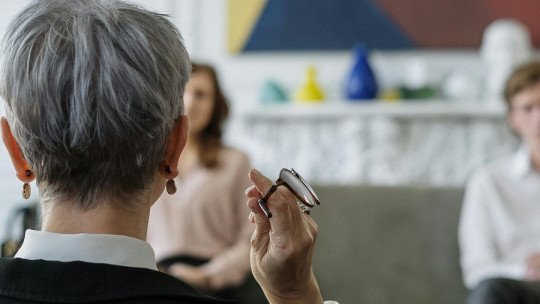Couples problem solving training is a therapeutic technique that focuses on equipping couples with effective skills to address and resolve conflicts in their relationship. This approach is based on the premise that most relationship problems are solvable if handled appropriately and constructively.
At the heart of dating or marital problem solving training is the idea of effective communication. Couples learn to express their concerns, needs and desires in a clear and respectful way. They are taught to actively listen to their partner, showing empathy and understanding towards their perspectives and feelings. This skill is essential for unraveling misunderstandings, reducing hostility, and establishing a solid foundation for problem solving.
In addition to communication, couples problem solving training focuses on developing specific problem-solving skills. Couples learn to identify problems in their relationship, break them down into manageable components, and jointly generate potential solutions. Creativity and collaboration are encouraged in the search for solutions that meet the needs and expectations of both parties. Throughout this article, we will unravel in greater depth problem-solving training applied in the context of couples therapy We will understand the importance of this process and the influence it has on the lives of both parts of the couples, in addition to breaking down, step by step, problem-solving training.
The importance of couples therapy in conflict resolution
Couples therapy plays a crucial role in resolving marital conflict by providing a safe, guided space where couples can constructively address their issues. Instead of ignoring or repressing conflicts, couples therapy encourages couples to confront them head-on with the help of a trained professional.
1. Open and honest communication
One of the most significant aspects of couples therapy is its ability to facilitate open and honest communication between partners. Many times, conflicts arise due to misunderstandings or poor communication. Therapy offers techniques and tools to improve communication allowing couples to express their emotions and needs clearly and understandingly.
2. Generation of a neutral environment
Additionally, couples therapy offers a neutral environment where both partners can feel heard and validated. This is especially important when dealing with emotional problems or built-up resentments. An impartial couples therapist can help mediate arguments and guide the couple toward solutions that benefit both parties.
3. Personal growth and self-awareness
Another essential aspect of couples therapy is its focus on personal growth and self-awareness. Often, relationship problems are rooted in past experiences or unresolved patterns of behavior. Therapy helps couples Identify and address these problem areas allowing them to grow both individually and in their relationship.
Steps of training in solving couple problems
Dating or marital problem solving training involves a series of structured steps designed to help couples identify, address and resolve conflicts effectively. These steps provide a clear and systematic framework for problem solving, promoting open and collaborative communication between members of the couple.
1. Identify and define
The first step of couples problem solving training is to identify and define the problem. Couples learn to clearly describe the problem in specific, observable terms, avoiding vague generalizations or personal accusations This initial phase establishes a solid foundation for working together toward a solution.
2. Generate potential solutions
Once the problem has been defined, the next step involves generating potential solutions. Couples are encouraged to be creative and consider a variety of options to address the problem. Thinking outside the box and exploring alternative approaches is encouraged to find a solution that meets the needs and expectations of both parties.
3. Evaluate and select the best option
After generating several possible solutions, the third step involves evaluating and selecting the best option. Couples examine each solution in terms of its advantages, disadvantages, and possible consequences. They are encouraged to consider how each option will affect their relationship in the short and long term as well as to take into account your own skills and resources to implement the chosen solution.
4. Implement solution and evaluate its effectiveness
Once a solution has been selected, the fourth step involves implementing it and evaluating its effectiveness. Couples work together to implement the agreed upon solution, observing any changes in the dynamics of their relationship. If necessary, adjustments or modifications can be made to improve the effectiveness of the solution.
5. Consolidate and maintain the solution
Finally, the last step of training in couples problem solving involves consolidating and maintaining the solution in the long term. Couples learn strategies to maintain your commitment to the agreed solution and to address any obstacles or challenge that may arise in the future. This may involve establishing routines, communicating regularly, or seeking additional professional help if necessary.
In conclusion, training in dating or marital problem solving in couples therapy offers a structured and effective approach to addressing conflicts. By promoting open communication, collaboration, and mutual commitment, this approach helps couples strengthen their relationship and overcome challenges. Couples therapy offers hope and resources to build healthier, more satisfying relationships, highlighting the importance of seeking professional help when necessary.









